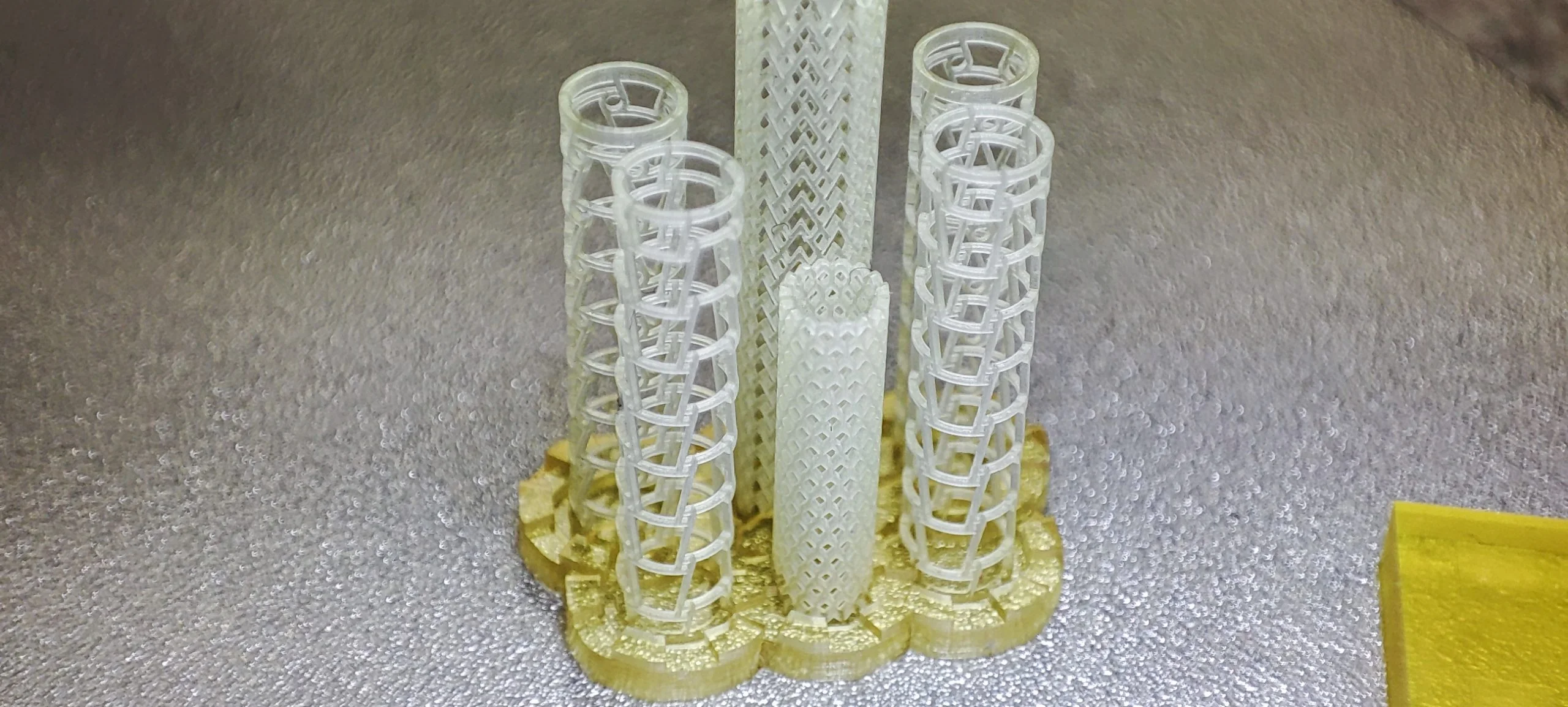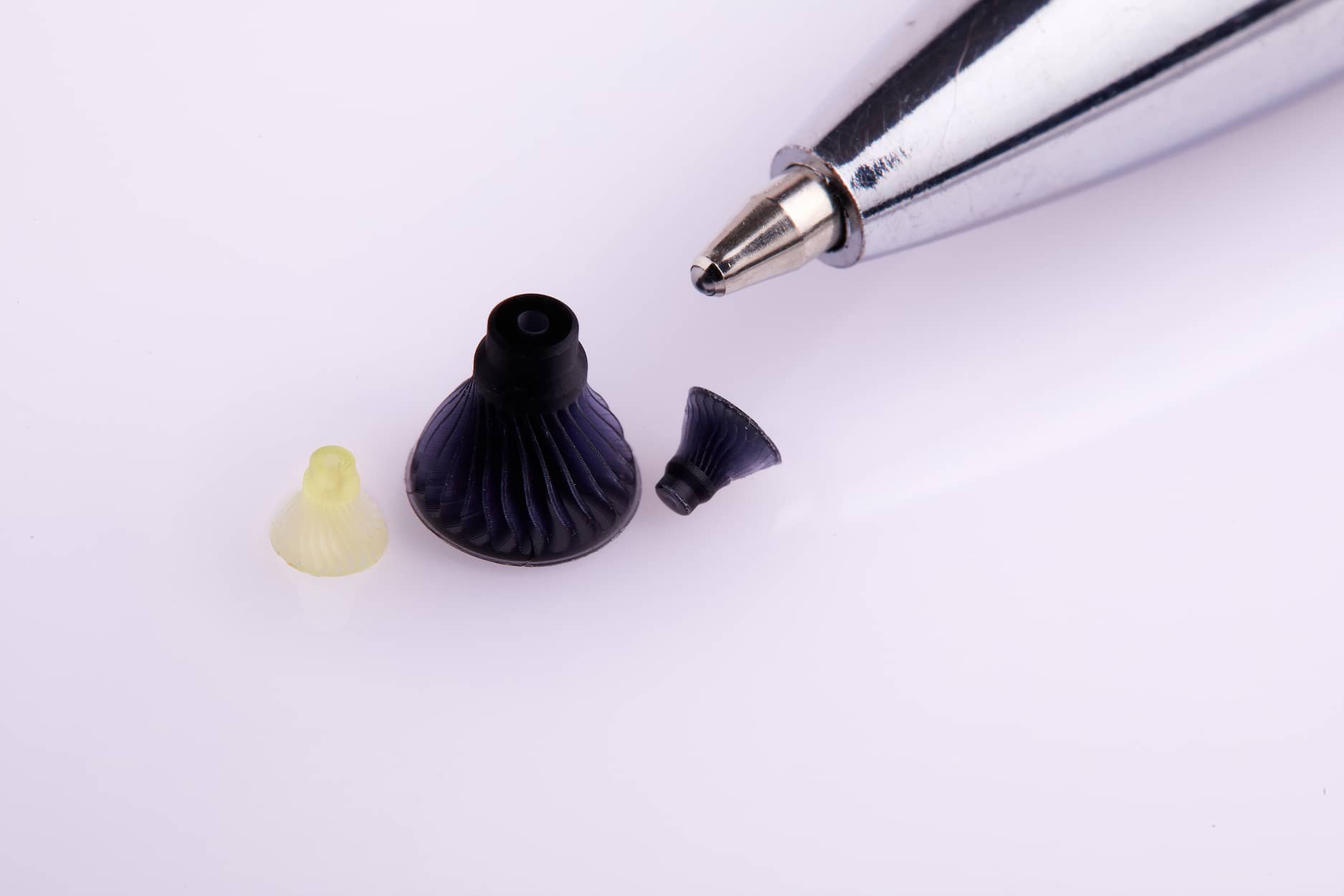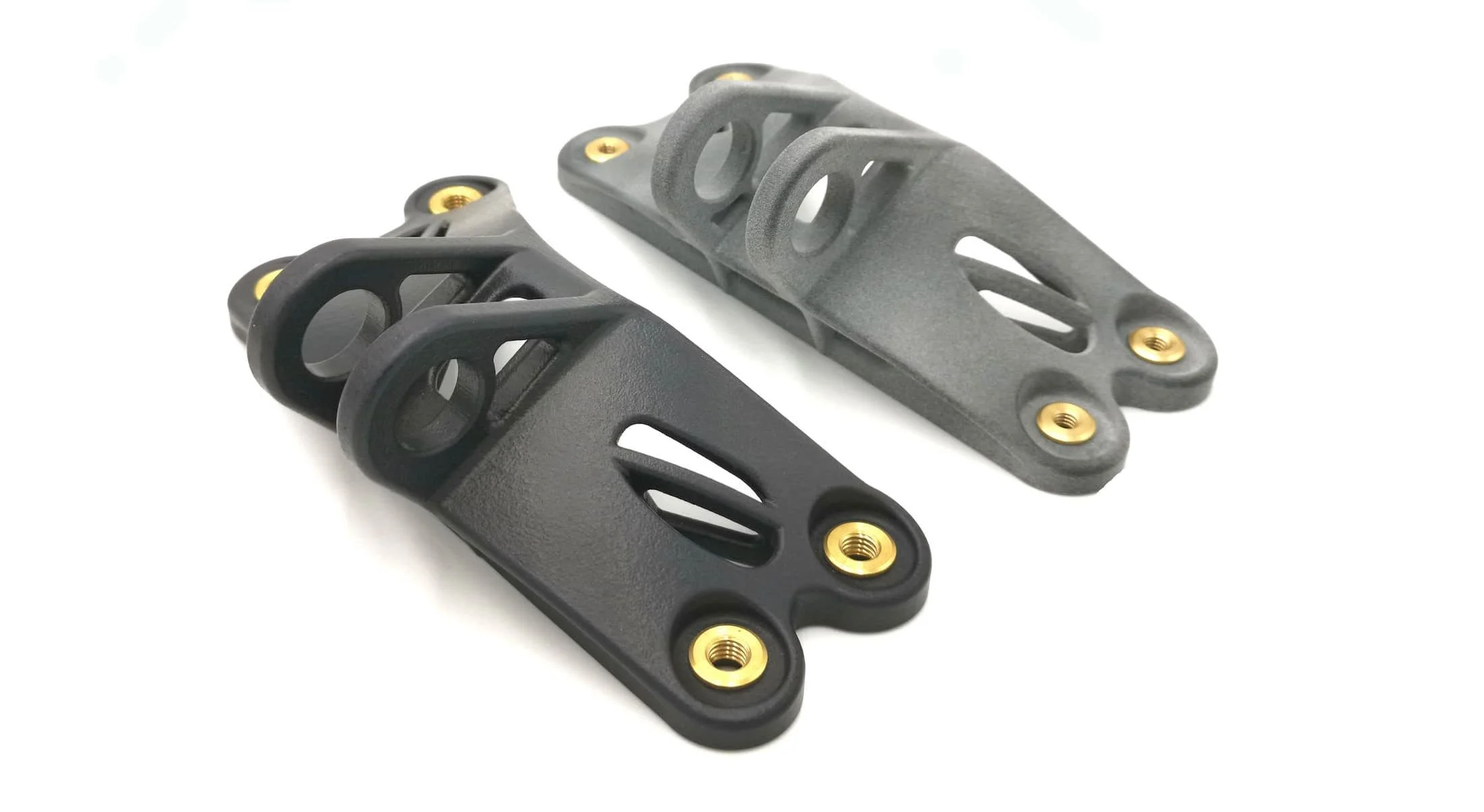Since the 1980s, the process of 3D printing has scaled dramatically from aesthetic purpose production to becoming an industrial-production technology. Now micro manufacturing is set to speed up prototyping processes. But what is Micro 3D printing? And why are the smallest components making the biggest differences?

From fantasy to reality, 3D printing has become a global manufacturing phenomenon. It is the process of creating a three-dimensional shape from the automated layering of metallic or plastic material. Also coined as additive manufacturing, it is often compared with subtractive manufacturing that involves removing material to create an object. Think CNC milling.
The idea for 3D printing originated in 1945 by author Murray Leinster in his short story Things Pass By. The writer described a robotic arm that could project molten plastic that hardened on exit from the nozzle. This arm would then draw a picture in the air following a diagram scanned with photocells.
If this sounds familiar, it is because Leinster hypothesised the 3D printing process that has since dominated the consumer market. This is called Fused Filament Fabrication (FFF), or in trade as Fused Deposition Modelling (FDM).
In the early 1980s, Japanese researcher Hideo Kodama developed a rapid prototyping system that harnessed a layer-by-layer printing process. Photochemical resin was hit with a UV laser to alter the resin’s molecular chain and create a solid polymer object. This is called stereolithography (SLA), and is a process which continues to be used in micro manufacturing.
After SLA was patented in the 80s, another technology emerged to create solid polymers from powder instead of the resin. 1988 saw this first patent for Selective Laser Sintering (SLS).
Many more 3D printing processes would become possible by the turn of the 21st century. By 2009 most patents fell into the public domain, allowing for 3D printing to become much more accessible and affordable. Along with ongoing advancements in computer aided design (CAD) technology, the history of 3D printing continues to evolve and innovate.
Micro 3D printing was showcased globally in a paper published in 1993 at the Micro Machine and Human Science conference. Using SLA layer-by-layer printing, a guided light beam could transform acrylic resin beneath a transparent window. This glass window maintained consistent layer thickness as the object was slowly printed on a lowered platform. In these early tests, objects could be made from a minimum size of 10mm. Over time, developments introduced lenses that could narrow a beam of light to extremely small sizes, improving print resolution.

SLA micro printed lattice
In 2005, a high-resolution micro stereolithography apparatus was developed, implementing established SLA and integrating a digital mirror device (DMD). This device worked as a dynamic mask and enabled the 3D printer to modulate UV light through a small lens, localising photopolymerisation on the resin surface and reducing the overall feature size. This could print an ultra-fine thread that was smaller in diameter than a human cell, at 0.6 microns (μm). Comparably, red blood cells range between 7-8μm. The smallest size the human eye can perceive is 50μm, such as a strand of human hair.
Micro 3D printing offers unbeaten precision and resolution when it comes to manufacturing the highest quality components. Though visible to the naked eye, they contain almost invisible, complex geometries that cannot be replicated with traditional printing processes. While thermoplastic projection such as FDM is possible at such a size, the aforementioned SLA developed in the 1980s, with its use of UV light, is scalable to the smallest of incremental points and lines that make up a layer.
Microfabrication has proven to accelerate on-demand prototyping and volume batch production processes. This makes it an ideal choice for additive manufacturing microelectronics and other micro-objects. More on its applications soon.
Micro 3D printing technology encompasses Polyjet, FDM, Multi Jet Fusion (MJF), and SLA. An on-demand 3D printing service provided by companies such as IPFL demonstrates the speed in the cutting-edge technology. With CAD data, Micro 3D printing produces parts able to be cleaned and ready for use in just two days.

It’s not unfair to assume that all 3D printers use plastic as their main source of material. Acrylonitrile butadiene styrene (ABS) is one such material. It is the same type of plastic used in Lego with a low melting point of 220oC. Advancements in additive manufacturing have allowed many more materials to be sculpted, even into the smallest shapes. 3D printing now encompasses biomaterials and ceramics, as well as harder substances like copper, gold, nickel, platinum, and silver.
IPFL uses the most recently developed materials specialised for Micro 3D printing. These excel in toughness and heat resistance, while offering a variety of appearances. Micro HTL is a high-performance engineering material used for load bearing applications. Due to its application, the material is incredibly strong and rigid once printed. Resisting heat up to 114oC, Micro HTL is a prime solution for tooling, dies, and precision component fixtures.
Similar parts are required in electronics, with electrical casings and small medical devices demanding tough materials for an end-to-life application. RG is a long-lasting engineering material that’s biocompatible and non-water absorbent, making it the perfect casing for vulnerable functions. As Micro 3D printing accelerates production processes, high volume manufacturing is catered by materials such as UTL. This high tensile material is prime for mass manufacturing printing solutions that must stand continuous wear for flexible applications.
The printing process plays a significant role in which materials are used. Aforementioned FDM is the process of printing thermoplastic filament from a nozzle which then hardens as it cools. Some FDM materials such as PC-ISO are tough enough to be gamma or EtO sterilised.
Multi Jet Fusion printing is a relatively new process that uses serial production for high-volume manufacturing. Its printed applications involve complex connectors, brackets, wiring clips, and grommets. TPU is a flexible thermoplastic resistant to chemicals, making it ideal for small components in potentially hazardous conditions.
PolyJet offers a versatile material catalogue designed to showcase smooth finishes and accuracy for prototypes and tooling. Photopolymer like Agilus is rubber-like for use in handles and footwear. Others like Vero combine dimensional stability with realistic detail for the ultimate prototypes and fit-for-purpose tooling.
Even clear SLA material can be produced at high resolutions in all axes, providing unprecedented surface finish immediately after print.

MJF printed bracket
Micro 3D printing plays a large role in the additive manufacturing of industrial prototypes and high-volume components. It can create ultra-high resolution and high-through printing accurately and consistently. Micro 3D printing results are therefore advantageous to a range of sectors—from automotive and aerospace to medical and pharmaceutical.
The medical industry depends largely on the equipment and tools utilised to provide treatments and health checks. With such devices becoming smaller and more compact, Micro 3D printing offers substantial advantages to their component manufacture. Specified materials can retain functionality and takes the stresses from application use over a long period of time. 3D printing also offers exact geometric shapes that may not traditionally be manufactured. This allows for a broader application in stents, prosthetics, and surgical planning.
Pharmaceutical development demands accuracy above all else. Micro 3D printing has proven to achieve precision and accuracy to microscopic detail. Miniaturised pharmaceutical components for healthcare, medicinal, and biological laboratories are now produced at a faster rate.
The electronics sector has boomed in the 21st century. Technology is advancing at rates far quicker than previously seen. Now more than ever, components for electronics must be made and delivered quickly and efficiently. Thanks to Micro manufacturing, expensive tooling can now be replaced with direct printing to application, thus speeding up production processes. Furthermore, Micro 3D printing is adjustable without incurring costs of tooling changes, maintaining unbeaten detail and printing resolution.
Fluid control application spans the healthcare market in medical and pharmaceutical roles. Microfluidics is possible with the creation of Micro 3D printed geometries, previously impossible through standard processes. Channels can be smaller than a grain of sand (40μm), with clear and crisp surfaces offering quick and precise analysis. IPFL specialises in the development of diffusion bonding and laser welding to Micro 3D printing solutions, increasing results of complexity.
So why has Micro 3D printing become so significant to today’s micro manufacturing? Its benefits have been outlined, but it can still be hard to justify its importance outside of printing small objects. By far, the most important aspect businesses like IPFL are providing with Micro 3D printing is quality relative to speed. Micro 3D printing has come a long way since its birth in the 1990s. Today, its technological performance has greatly accelerated process speeds from prototype to production.
Quality of Micro 3D printed products has significantly improved through ongoing advancements to the technology. Manufacturers can reduce production costs and waste; only the exact amount of material is used for printing a chosen object. Quality control and management is reliable with consistent end products displaying precision, accuracy, form and fit, and sustainable tight tolerances.
The innovations being made in the healthcare sector by Micro 3D printing is especially significant. In 2021, Micro 3D printing was used to create microneedle patches for vaccine distribution. These patches, studied and published in the Proceedings of the National Academy of Sciences, showed to provide 10x greater protection against administered vaccines from a single injection. Although previously studied for years, this revelation has only recently been made possible by advancements in Micro 3D printing. Specifically, printable sharpness can now be retained and is easily customisable.
Significantly upscaling small component manufacture, Micro 3D printing continues to rewrite engineering history in what’s possible at a microscopic level.